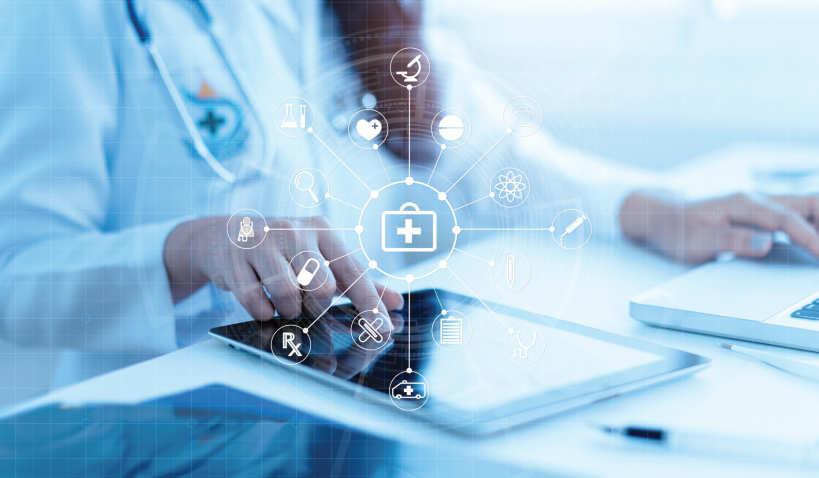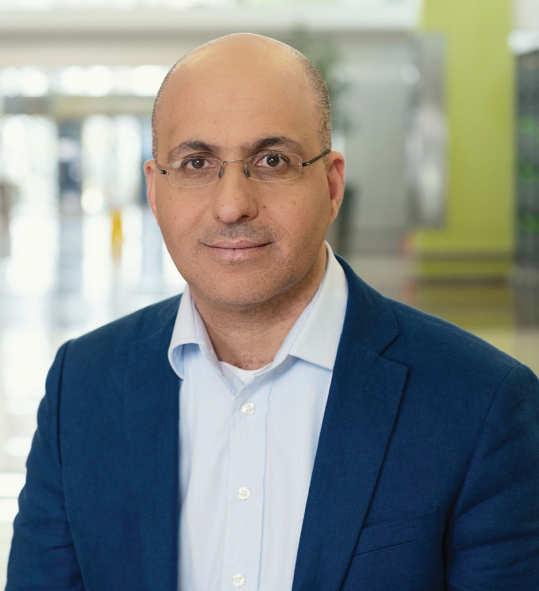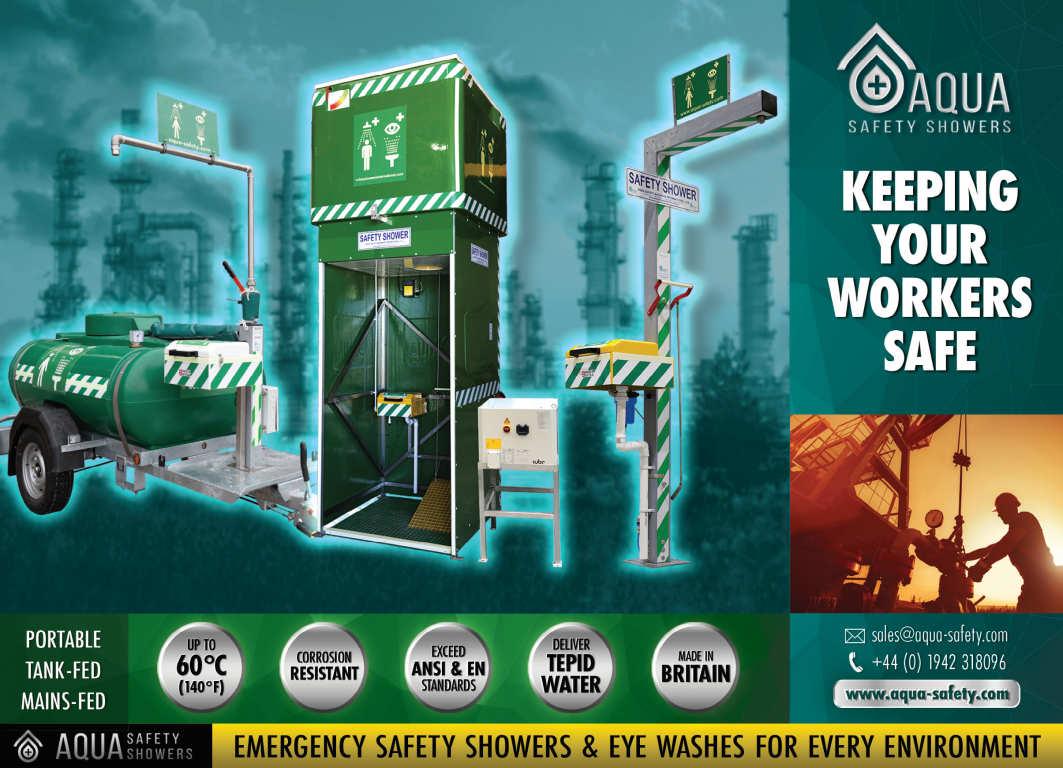
8 minute read
Remote healthcare
Sam Tayan, head of MENA at Zoom, on the benefits and challenges of responding to health crises and patients’ needs remotely, and the implications the digital transformation has had on the Middle East’s healthcare landscape.
Sam Tayan, head of MENA at Zoom
Healthcare is one of many sectors keeping up with the digital revolution. The technological revolution of recent decades have transformed the landscape of healthcare in the Middle East and worldwide. 'Telehealth' appointments and consultations have become standard for many patients, with the pandemic accelerating this trend, forcing a 60% increase in digital appointments.
From virtual appointments, to integrated application-based consultancy platforms, digital prescriptions and electronic health records, the healthcare sector is rising to the demands of the digital revolution.
Consumers have a growing appreciation for integrated platforms and the ease of virtual consultancy over in-person appointments. 'Telehealth' is not only a preference among consumers, but healthcare professionals also appreciate the remote application of virtual appointments. This transition aligns with the UAE Vision 2021 plan and the Saudi Vision 2030, with making significant strides towards simplifying the patient and practitioner experience through digital solutions being made.
While there may always be a place for physical clinics, the sector must continue to adapt to stay on the cutting edge of consumer preferences.
Sam Tayan, head of MENA at Zoom, has witnessed the various changes within the healthcare landscape first-hand. Following are his thoughts:
Providing telehealth and virtual care solutions is more crucial than ever now that customers have greater control over how and where they get healthcare. The GCC quickly warmed up to the idea of adopting telehealth solutions. Studies have shown that one of the UAE’s leading telehealth providers witnessed strong growth in use between March
and September 2020.
Consumers seek options that can adapt to their changing needs, such as retail and directto-consumer solutions or direct communication with their primary care physician. Patients may prefer or be obliged to attend an in-person appointment, while others prefer to save time and money by adopting high-quality telehealth solutions. According to a survey by Align Technology, more than 85% of UAE and Saudi Arabia respondents are embracing teledentistry, with 78% stating their preference due to the convenience of online appointments.
Reliability, consistency, and quality are crucial to improving the patient experience as more healthcare companies establish long-term telehealth and virtual care solutions. However, encouraging provider adoption and establishing customer trust is as vital. Here are some considerations to make while selecting a solution:

Adoption is aided through workflow integration
When combining the proper technology with the correct application, end-users are almost invisible. Providers and patients alike want a telehealth solution that "simply works" and seems as natural and intuitive as something they've been using for years. As mentioned, the GCC is making significant strides towards simplifying the patient and practitioner experience through digital solutions. To provide that experience, the flexibility to integrate and personalise is crucial.
Look for a telehealth solution that can interact with your electronic health record (EHR) or health information technology (HIT) system or allow for application programming interface (API) integration with open platforms, giving you more flexibility and customisation options. Providers may focus on practicing medicine instead of messing with controls or switching platforms because the video is seamlessly integrated into their current EHR.
Consider alternatives to the clinic
Virtual care involves much more than patient-provider encounters, ranging from patient education to population health. Coordinated care teams can rapidly assemble and discuss a patient's treatment plan without being in the same room. Remote monitoring can aid in tracking a patient's health and allow clinicians to communicate with them rapidly via video. Through virtual visits, family members can also be more involved in their loved one's care.
Using a multipurpose video platform in clinical and administrative contexts can lead to more interaction and information sharing. Virtual training, certification programs, and conferences allow providers to consult with worldwide specialists and continue their medical education. Hospital management can gather workers from several departments and buildings for routine announcements and emergency communications.
Healthcare practitioners and companies can easily bridge the clinic and the business gap by exploring beyond clinical applications for virtual platforms. Organisations can develop critical relationships with their patients, seamlessly coordinate treatment, and communicate more efficiently than ever before with one platform servicing both the company and the consumer – and giving the same universal experience.
Image Credit: Zoom
Sam Tayan’s role as head of MENA at Zoom has put him at the forefront of the ‘telehealth’ revolution.
Zoom’s head of MENA on keeping up with demanding healthcare innovation. It all boils down to the patient's prior experience
We've learned a lot about virtualising the healthcare industry during the last two years. Telehealth and video communications throughout the healthcare continuum make it more accessible, convenient, and inexpensive.
For a better patient experience, focusing on innovation and ongoing improvement is essential. Consumer demands and wants can shift quickly, so a telehealth solution that listens to customers and adapts its products to meet industry needs can help you stay ahead of the curve. ■
New product launches to promote life safety and wellbeing
Occupational health The British Heart Foundation will be showcasing RevivR, a lifesaving CPR tool, at the Safety & Health Expo taking in place in London from 17-19 May.
RevivR helps users learn lifesaving CPR in 15 minutes. “The training is easy, free and quick; all you need is your mobile phone and a cushion; in 15 minutes, you’ll have the confidence to step in and save a life in an emergency,” explained a spokesperson.
“There are more than 30,000 out-of-hospital cardiac arrests every year in the UK and tragically, less than one in 10 people survive. The BHF wants to triple survival rates of out of home cardiac arrests by 2030 and by learning CPR, employees can help us achieve that. Giving CPR and using a defibrillator can more than double the chances of survival; the RevivR training tool will teach you how to recognise a cardiac arrest, give you live feedback as you practice chest compressions and show you how to use a defibrillator.”
The British Heart Foundation will also be showcasing My Wellbeing Check: a low-cost, digital wellbeing assessment tool that lets companies identify what their employees’ health and wellbeing needs are. After answering questions on their lifestyle, employees will receive a personalised dashboard, which collates their overall wellbeing and cardiovascular risk. The anonymised results feed into a company-wide report to help them build their wellbeing interventions.

The British Heart Foundation will be demonstrating the RevivR CPR tool at Safety & Health Expo.
Image Credit: British Heart Foundation

Connected gas detection
MSA – The Safety Company discusses the benefits of connected solutions to help optimise gas detector compliance and fleet management.
Efficient and effective management of a fleet of portable gas detectors is important for maintaining the health and safety of employees. There are many factors that can impede this process.
For many safety professionals, it is a big and time-consuming challenge to equip every worker with the correct personal protective device so that workers are prepared to begin the work day. It is not uncommon for safety teams to spend hours overseeing safety programmes at different plant locations. This includes writing incident reports, checking in and checking out equipment, and keeping a manual record of use and maintenance.
A big challenge for safety managers in managing a fleet of gas detectors is ensuring that the fleet is ready for work. Failing to do so can impact equipment availability, causing unnecessary downtime and non-compliance. Tracking and maintaining dozens or even hundreds of devices is far from easy. Pen-and-paper methodologies have proved to be less than ideal.
Fortunately, this is the digital age, and new technologies, including cloud connectivity, have made their way into fleet management. Using connectivity to automate fleet management can save time for safety managers. It also boosts productivity by providing insight into actions that should be taken, making it possible to take a proactive approach in managing the fleet. All in all, it helps to eliminate frustrations and prevents unnecessary downtime.
Gas detection software services can help streamline all aspects of gas detection management – from real-time situational awareness to simplify fleet management and improve safety outcomes, to automated record-keeping.
The cloud-based MSA Grid services are a remote monitoring and smart compliance management solution for the MSA Altair fleet of portable gas detectors. Powered by Safety io, a software subsidiary of MSA –The Safety Company, it helps to automate fleet management –with no upfront capital investment.
Gas detectors store a lot of data that, with the right lens, can provide you with unique safety insights not only to proactively manage any size fleet of portable gas detection, but also for improved safety programmes and outcomes.
Using ready-to-use data available on the MSA Grid, safety managers can learn from data to adjust safety processes and procedures, drive worker accountability, track trends and identify potential issues. ❖
BELOW: Leveraging connectivity streamlines the gas detection fleet management process while also improving safety.
Image Credit: MSA - The Safety Company









